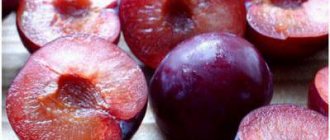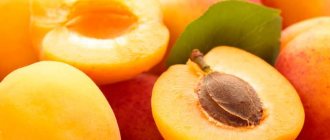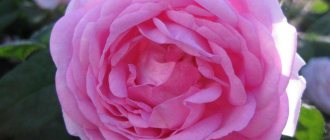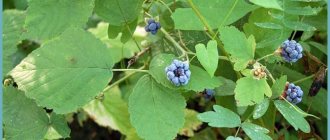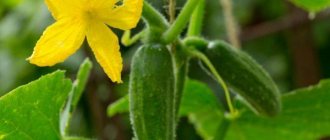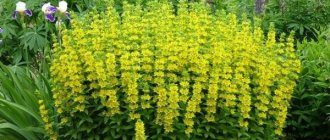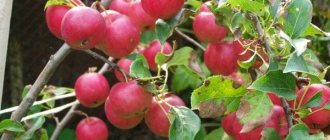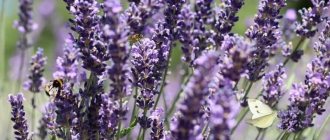Properly growing pentas from seeds at home allows you to get a real “bouquet in a pot” that will delight the eye with its flowering for many months. Every beginning gardener can organize crop care in accordance with the rules of agricultural technology. We recommend that you listen to the advice given in the article and try to create similar beauty at home.
A perennial called Pentas forms a real bouquet in a pot at home. This plant is an extensive genus of the Rubiaceae family. In total, about 50 natural varieties are known. Only one has gained particular popularity as a home crop. It is usually called Lanceolate Pentas (Pentas lanceolata) or Herbaceous (Pentas carnea). As a houseplant, the Egyptian star flower attracts gardeners with its unpretentious character and unusual flowering time - from mid-autumn to spring.
Look at the pentas flower in the photo, which illustrates the beauty and grace of the buds:
Growing pentas from seeds is possible in a pot culture
Pink and white buds complement each other well
Delicate shades will decorate the garden and area
Description of perennial culture
From the description of pentas it is known that it is a perennial crop. In the wild of Madagascar and parts of Africa, species of very large sizes are found - up to 150 cm in height. At home, the potted bouquet reaches 50 cm. The plant has long, straight stems and weak branching. They have oval wide leaf plates of dark green color. The leaves are arranged oppositely, forming a beautiful background for large inflorescences. The average length of the blade is 5-9 cm. The surface of the leaf is wavy with a clearly defined vein in the center.
The flowering period in the wild is from October to February. At home, everything depends on the living conditions. Pentas is one of the plants whose flowering time can be adjusted. For some gardeners, the perennial blooms in winter, for others in spring. All this time, the flower pleases its owner with luxurious dome-shaped inflorescences. They consist of small buds with 5 petals. The corolla is formed into a 5-pointed star. There are a wide variety of varieties. They may have white, pink, red, beige or purple flowers. Even at home, the inflorescences are large, reaching 10 cm in diameter. Some gardeners, in order to create a beautiful composition in one pot, plant several plants with different colors of inflorescences nearby.
Diseases and pests of pentas
The Egyptian star, grown in the right conditions, does not cause practically any problems. In other cases, the crop is subject to attacks by pests and some ailments.
Diseases
The main disease to which this crop is susceptible is leaf chlorosis. It is characterized by yellowing of the leaf blade. To revive the plant, it is necessary to feed the pentas with chelated fertilizer, which stimulates the production of chlorophyll.
Pests
The main enemies of Pentas are:
- scale insect;
- spider mite
To get rid of uninvited guests, pentas are treated with chemicals. If the damage is extensive enough, it is better to grow a new flower from a healthy cutting.
Growing pentas at home
To grow perennials at home, hybrids of the natural variety of Lanceolate pentas are most often used. It is known that in nature a flower itself “decides” when to bloom. Growing in tropical rainforests, it can form flower buds in winter or summer. Note that during the tropical winter, the summer season is in full swing in our country. At home, it is very difficult to regulate this process.
The only thing you can influence is the duration of flowering. This is done by trimming the inflorescences. Remember that pentas has a conveyor-type flowering mechanism. That is, while one inflorescence fades, it collects buds for the next. You can also extend the growing season by adding mineral fertilizers. But, for a perennial, “wintering” and rest are of great importance. All this should be taken into account when organizing the care of pentas in your home collection.
Features of home care
In order for the pentas plant to please with its attractive appearance and abundant flowering for a long time, it is necessary to provide it with the most optimal growing conditions. The plant does not require special labor-intensive measures. A standard set of procedures is sufficient for normal growth and flowering at home.
Temperature
Godetia flower - growing from seeds at home
During the growing season, normal room temperature is considered optimal for growing and maintaining.
Attention! In winter, it is recommended to keep the plant in a room with a temperature of about +10 degrees to provide the plant with a period of rest.
Lighting
Egyptian star is a flower that prefers bright lighting without access to direct sunlight. The sun can damage the leaf blade, so if burns are detected, the plant should be shaded.
Lack of lighting is indicated by stretching of the flower and loss of stability. The problem can be solved with the help of additional lighting.
Watering and humidity
In spring and summer, the plant should be provided with regular watering and maintaining the substrate in an evenly moist state. During the dormant period, the number of waterings is significantly reduced. For irrigation, you can only use settled water. Water the flower after the top layer of soil dries.
Now many gardeners prefer special flasks for automatic watering. They will be especially useful for those who do not have the opportunity to provide the plant with regular watering.
To extend the duration of flowering, experts advise adding a complex mineral composition specifically designed for flowering plants to the water for irrigation.
Natural air humidity should only be increased during very hot daytime hours.
Note! Stagnation of moisture can negatively affect the root system of the flower and cause it to rot.
Starla Lavender Shades outdoors
Priming
Well-drained and nutritious soil is ideal for representatives of this variety.
Feeding
For abundant and lush flowering, it is recommended to feed the plant twice a month from the beginning of growth until it enters the dormant period with products specifically designed for flowering plants.
Features of winter care
During the dormant period, which occurs in the winter months, the number of waterings is reduced, and the air temperature drops to +10 degrees.
Pentas varieties
Any decorative varieties of pentas adapted to low air humidity and low light are suitable for indoor growing.
The pentas starla flower is widespread and has a long flowering period. 'Lavender Shades' has gorgeous lavender petal shades. Blooms in lush caps.
Other varieties:
- pentas starla "White" - will delight you with its exquisite dark green foliage, shading the snow-white buds;
- pentas starla "Deep Rose" - delicate pink inflorescences on stems up to 45 cm high, blooms from March to November;
- pentas starla “Mix” - various shades of buds (white, pink, purple, lavender).
Growing pentas starla from seeds is a fascinating process. Shoots appear within 4 – 6 days. Then there is an active set of deciduous mass. Flowering begins 60–70 days after emergence. It is possible to grow Pentas starla as an indoor perennial. With proper care, it grows magnificently and blooms for 7 to 8 years.
Popular varieties of graffiti pentas are “Red Corduroy”, “Color Set”, “Mix”, “White”, “Lipstick” and others. They are distinguished by their small height and compact arrangement of buds in inflorescences. When growing pentas graffiti from seeds, you should pay attention to its ability to cross. Very often, repeated vegetative propagation produces so-called chimeras. This creates scope for the selective work of passionate gardeners.
Description of Pentas
The plant has an erect stem and elongated lanceolate leaves. The shoots form a bush about 50 cm high. The medium-sized flowers have the shape of a star with five ends, which is how the plant got its name.
They come in white and various shades of red and form an umbrella inflorescence reaching 8-10 cm. Like multi-colored balls, they decorate the bush throughout the flowering period, from spring to mid-autumn. By combining varieties of different colors, you can decorate flower beds and balconies in the desired pattern.
How to grow: from planting to care
Before growing pentas from seeds, you should choose the right planting material. The seeds must be fresh, as they quickly lose their viability. They should not be processed before sowing.
Prepare the soil for planting pentas - it should be light and well-structured, with a high organic content. Place a layer of expanded clay at the bottom of the planting container. Then lay down the soil and compact its surface. Moisten with a spray bottle. Spread the seeds over the surface of the soil and carefully moisten them with spray bottles. If the seeds are in a shell, then it is necessary to moisten them until the shell dissolves.
Cover the container with the crops with plastic wrap and place in a warm, sunny place. Shoots appear within 5-7 days. They need to be carefully watered with drops of warm water daily. In the morning and evening, the seedlings should be sprayed with warm water from a spray bottle. The higher the air humidity, the more actively the plant will grow and develop.
In the future, growing pentas from seeds comes down to primary and repeated picking. For the first transplant, it is important to choose the right container. It should be no more than 100 ml. After 3 weeks, transplant the seedlings into 200 ml containers. And 4 weeks after that, transfer it to a pot in which pentas will grow at home.
This plant requires pinching at the 6th leaf development stage. By pinching off the top, start the process of active formation of axillary flower buds. This will speed up the onset of budding and flowering.
Fertilizing begins 2 weeks after germination. They need to be done once every 7 days, alternating mineral and organic complexes. It is better to buy ready-made mixtures for flowering plants. Only experienced gardeners can prepare solutions themselves.
Proper care of pentas in adulthood is described later in the article.
Pentas breeding
The flower is propagated in two ways: using seeds and cuttings.
Planting seeds is popular because it can be done at any time of the year. Planting material is purchased at the store and placed in moist soil. The container must be placed in a well-lit place and the temperature must be maintained at about 25 degrees. In a few weeks, shoots will appear.
Sowing pentas:
Cuttings can be obtained by pruning the bush; branches longer than 5 cm are suitable. It is recommended to place the prepared stem pieces in water for several hours and then plant them in the ground. The temperature should be about 18 degrees. Rooting occurs within 10 days. When full roots are formed, the plants can be transplanted to a permanent location.
Lighting and placement
This is the most important nuance for abundant flowering. Pentas is suppressed in the shade and blooms less abundantly. But it does not tolerate harsh sunlight, especially after a period of rest. It is best to accustom the flower to bright light gradually. In winter, install special phytolamps in dark apartments. So, the plant will bloom throughout the winter season. If you expect flowering in the spring, then after winter you can take the perennial to a glazed balcony in warm weather. The ideal location is an eastern or southern window. For some time, before the flowers appear, it is better to shade the pentas from bright light. As soon as the first inflorescences appear, you can remove the shelter. When taking a plant into the summer garden, it must be hidden from strong winds. In winter, short-term ventilation is allowed, but so that the plant is not exposed to a strong cold current. The perennial does not tolerate drafts. Under their influence, it sheds its leaves and stops growing.
Lighting
The plant loves bright light and grows well even in direct sunlight. That is why the window sill of a south window can become its permanent place of residence. However, you should carefully monitor the plant, and if in summer you notice burns on the leaves, you should shade the window a little. If in winter your flower becomes very elongated and loses its stability, this indicates a lack of lighting. During this period, the use of additional lighting is justified.
Air temperature
In the wild, pentas grows in warm tropical forests. Therefore, at home, the optimal air temperature for perennials is considered to be +20..+25°. When kept in a hotter microclimate, the plant's leaves begin to fall off and it becomes depressed.
Watering and humidity
These are also important nuances. Abundant watering is required before flowering begins. As soon as the indoor pentas flower begins to grow, regardless of the season, the amount of moisture must be significantly increased. Water the plant only with melt water. Prematurely let the moisture settle for 1-2 days. This time is increased if the apartment is located in a big city.
Under no circumstances should you water your home pentas flower with running and cold water. Heavy impurities negatively affect the composition of the soil. Cold water affects development - it stops it and can cause rotting of the rhizome. During the dormant period, watering is reduced, but it is not necessary to stop it completely. When the earthen clod dries out, the leaves of the plant turn yellow and fall off, and the flower buds are suppressed and dry out.
Bright inflorescences can only be seen with high air humidity. It should be at least 60% during the flowering period. Such indicators are difficult to achieve in an apartment. In winter, it can be organized by hanging wet towels or using an automatic humidifier. In summer, it is best to spray the plant with melt moisture from a fine spray bottle. With this procedure, water should not get on the inflorescences, otherwise they will begin to rot. Also, next to the pot you can place a container with wet moss or expanded clay. The higher the humidity in the air, the more abundantly the pentas blooms with star-shaped buds.
Proper cultivation of pentas flower
Poliscias Fabian: growing conditions and home care options
Egyptian star grows well in containers outside and can even be a good houseplant if it gets enough light. It grows and develops best when exposed to full sun and moist, well-drained soil. Can adapt to less sunny conditions, but will not flower as profusely. The flower is definitely not suitable for planting in full shade, where it will be susceptible to pathogenic fungi.
Pentas Starla
Temperature
Pentas Lanceolata is a tropical plant that loves warmth and intense light. On particularly hot days, pentas weakens and withers, so a temperature of 20-25°C is preferable.
Important! Although pentas loves the sun, you cannot immediately place it on a south window. Without gradual training, the flower will get burned. In summer you may even need to shade the window.
In a high-rise building it is better to move the flower to the balcony, and in a private house - to the garden. Pentas Lanceolata tolerates drafts well, so frequent ventilation will not harm it. Strong cold winds in the garden are tolerated by the flower thanks to the right location. It is better to plant Pentas near a wall or surrounded by stronger specimens.
In August-September, it is necessary to change the top soil in the container and place the plant on a north window. Moisturize generously. In October, Pentas Lanceolata can be moved to a south window, and in November it will bloom.
Humidity
For a flower, the humidity regime should be kept at 60%. When spraying, it is better not to get on the inflorescences. A tray with wet expanded clay and moss has worked well. If you plant it in a flower pot, be sure to make a drainage layer of small stones at the bottom, which will help remove excess water.
Watering
It is necessary to take settled water, and after watering, add mineral fertilizers with phosphorus, which stimulate the development of buds. Since dry soil can lead to yellowing, in the autumn-winter period you need to especially monitor the frequency of watering.
The plant can adapt to a variety of soil types, but prefers soil that is rich and slightly moist with drainage. When grown outdoors, the flower must be planted after the risk of return frost has passed. Excess moisture and watering are very harmful. In late autumn and winter it is necessary to water just a little.
Watering at different times
Top dressing
As a rule, pentas blooms several times per season. Pentas Lanceolata cannot be forced to bloom continuously, but the duration of this process can be influenced. Feeding the flower significantly increases this period, but do not get carried away with fertilizer; any plant needs rest, just like a person.
Note! You can apply mineral fertilizers every 20 days during flowering, no more.
The plant needs fertile soil, but it does not like high salt levels. Pentas is suitable soil for decorative foliage plants. Frequent transplants are also important. The pot quickly becomes crowded due to the fact that the flower vigorously grows rapidly rooting shoots. Pentas Lanceolata is replanted every 1-2 years.
To increase green mass, it is advisable to fertilize in the spring with a slow-release granular fertilizer, as well as compost to save water while at the same time avoiding weeds that can compete for soil nutrients. The soil should be slightly acidic (pH 6.5).
Trimming
Pentas is not very picky. Monitoring his health is quite simple, but it is much more difficult to achieve an ideal appearance from him: he bends somewhere, crawls away, stretches out. In case of any deviations from the required type, the flower should be pinched. Frequent pruning of shoots will help maintain the beauty and neat appearance of the plant. Pinching is carried out only between flowering phases.
Propagation from seeds
Transplantation and soil
Soil for decorative leafy house plants is chosen as a nutrient mixture. The soil should have a low salt content. The plant can be replanted as needed or once a year in the spring. The need may arise when the perennial grows strongly. During the active life cycle, the stems, in contact with the ground, quickly take root in it. If you replant the plant, updating the nutrient mixture once a year, it will grow less.
In the period between flowering, the flower is pinched several times. When there is a lack of light, the pentas plant's stems become elongated. If they have reached a length of more than 40 cm, then they need to be carefully cut off. Such a plant develops quickly and without proper care, pentas grows greatly over the season and loses its decorative effect.
Diseases, pests and ways to combat them
A tropical flower is rarely exposed to pests and diseases. Especially if the plant is properly cared for. In rare cases, a gardener faces the following problems:
- Chlorosis. This disease occurs due to a lack of iron in the soil. The leaves of the Egyptian star first turn yellow and then die completely. To save the plant, fertilize with iron chelate is introduced.
- Aphid. Small insects secrete a sticky sap that covers the leaf blades of the plant. When there is a small amount of the pest, folk recipes are used - infusion of marigolds or garlic. In case of severe infection, the use of insectoacaricides cannot be avoided. “Aktellik” and “Aktara” are considered the most effective in pest control.
- Spider mite. The sticky web that envelops the Egyptian star is the first sign of the appearance of a pest. Small dots are visible on the inside of the leaf - this is the pest. When there is a small concentration of insects, use a solution of green soap, which is used to wipe the leaves of the plant. In case of mass damage, purchase acaricidal agents and apply them according to the instructions on the package.
